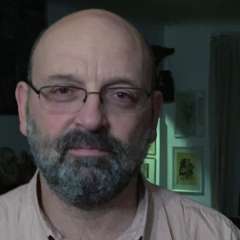Since its première at the Komische Oper Berlin in 2012, a production of Mozart’s The Magic Flute, conceived by the Australian director Barrie Kosky and the creative team behind the groundbreaking British theater company 1927 – founded by Suzanne Andrade (director) and Paul Barritt (animation) – has criss-crossed the world, from Edinburgh to Shanghai and from Los Angeles to Moscow. Here, at the Deutsche Oper am Rhein, it has been running in repertoire since 2013, allowing thousands more people to understand what a modern take on Mozart’s last opera might be.
Similar to other undisputed masterpieces, Die Zauberflöte has the potential to be read using many interpretative keys: a little veiled depiction of Masonic initiation rites; a fairy tale narrating a young couple’s quest for enlightenment, succeeding to overcome all the obstacles they faced; or a special effects entertainment displaying all sorts of contraptions, from flying machines to waterfalls, that librettist, stage director and actor-impresario Emanuel Schikaneder could muster for the opera’s première in 1791 at the Theater an der Wieden. What Kosky and his collaborators have achieved is an extraordinary version of the latter, anchored by modern technology and overflowing with joy and energy. The main element of their staging is a huge screen on which animation sequences are projected. The singers appear and vanish using several doors and rotating platforms cut out in the screen, well above the ground, having to act in sync with the hand-drawn animated characters.
Kosky and his 1927 collaborators (the company is named after the year The Jazz Singer ushered in the talkies) have transplanted an 18th-century setting into the 1920s. They replaced the spoken text sections of the original Singspiel with silent movie-inspired projected titles. What’s more, in a potentially disturbing choice, the dialogues on the screen were accompanied by extracts from Mozart’s fantasias without a clear separation between this fortepiano interpreted music and The Magic Flute’s score. Esther Bialas, the production’s designer, dressed the singers in spectacular but somehow inconsistent outfits evoking the era. As Pamina, soprano Lavinia Dames sported a Louise Brooks-inspired bob, starting a little cautiously but getting more confident as the evening passed. The three well-coordinated ladies, portrayed by Inga-Britt Andersson, Marta Márquez and Ramona Zaharia, seemed to have descended from a Weimar-era silent movie. Papageno, played by Romanian baritone Bogdan Baciu – who was in fine voice but a tad awkward as a humorous character – wore the type of hat and suit we associate with Buster Keaton. Tenor Florian Simson, solid in his rendition of “Alles fühlt der Liebe Freuden”, was a creepy Nosferatu lookalike. Sarastro’s top hat, meanwhile, might have brought to mind movie director Louis Meliés or even Abraham Lincoln. Finnish bass Sami Luttinen sang “O Isis und Osiris with the required majestic approach. Dressed neutrally in a tuxedo, tenor Ovidiu Purcel displayed a warm, Italianate voice as Tamino.
Arguably the best singing of the evening came from Antonina Vesenina as The Queen of the Night. Not only did she nail all the right notes in “Der Hölle Rache”, but her penetrating voice also had real tinges of sweetness. Unfortunately, the character was depicted from the very beginning as a voracious spider with gigantic legs, robbing it of any complexity. It wasn’t the only oversimplification: Papagena – soprano Monika Rydz in a conventional costume – did not appear initially as a repugnant old hag trying to charm a reluctant Papageno.
There is little doubt that humans and their singing were not the most important aspect of the mis-en-scène; the animated characters were the real stars of this show. Paul Barritt created a riot of mesmerizing images, moving kaleidoscopically in front of the public’s amazed eyes: the parade of Sarastro’s retinue of animals with their visible cogs and wheels moving at different but synchronized speeds; a jolly black cat playing the role of a vahana for Papageno, the birdcatcher; the pink dancing elephants that the same sees when he downs too many cocktails; Monostatos’ rabid black dogs tamed by Papageno’s bells, here a series of cut-out dolls with chubby legs; Tamino’s flute transformed into a little nude nymph leaving a trail of musical notes when moving around.
Under these circumstances, Mozart’s wonderful music had to play a secondary role, mainly because the public was too overwhelmed to properly listen to it. The evening’s conductor, Axel Kober – music director of the Deutsche Oper am Rhein – was unable to properly dictate the rhythmic patterns, the orchestra having to follow the tempo of the animation. He drew a solid and clean if not outstanding performance from his ensemble.
In Richard Strauss’ Capriccio, two characters – the composer and the poet – debate the relative importance of music vs text for opera. The first one argues for music’s primordial role – “prima la musica e poi le parole” – and the second believes exactly the opposite. For this Magic Flute, neither of them would have been right.




